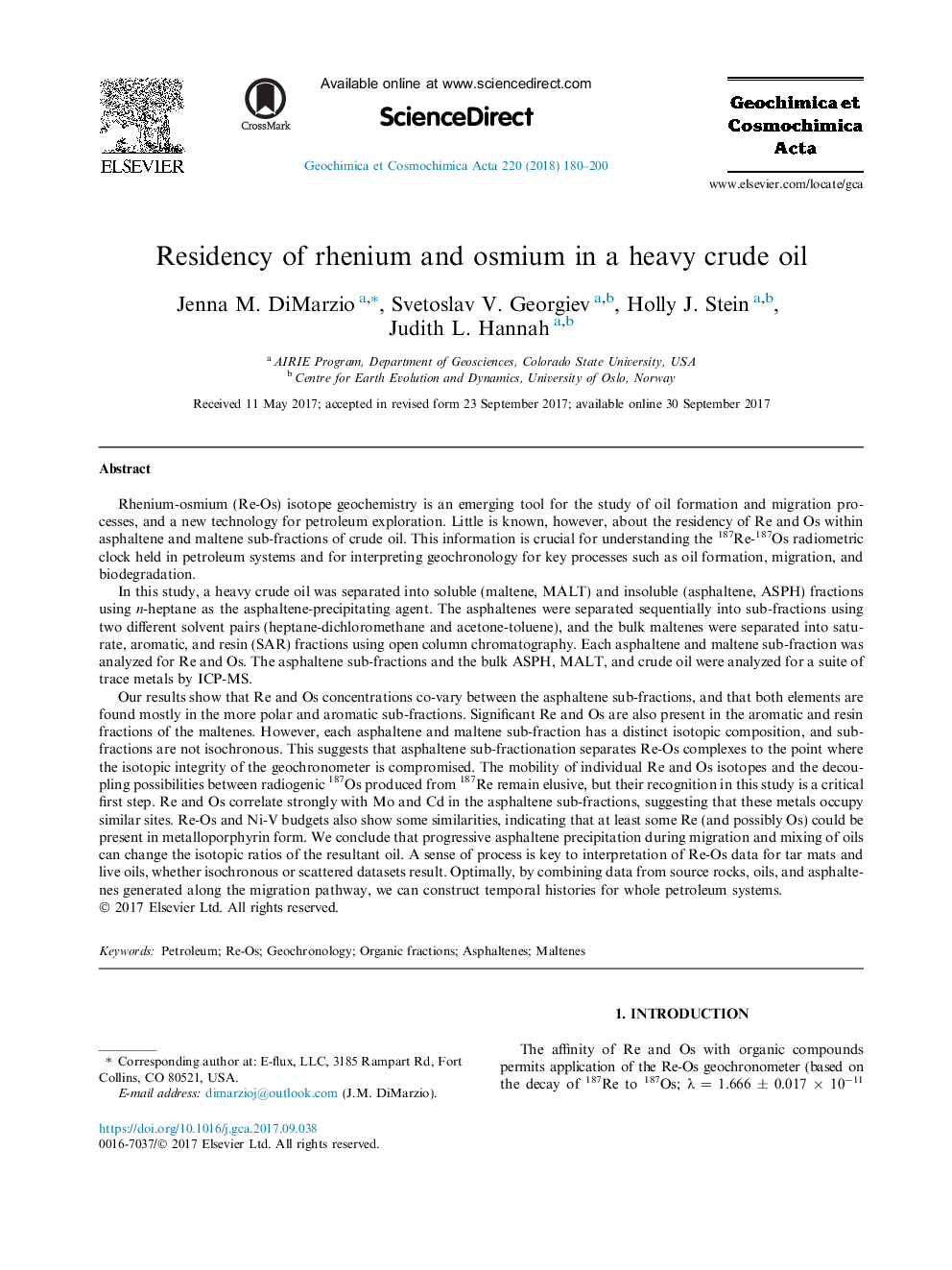| Article ID | Journal | Published Year | Pages | File Type |
|---|---|---|---|---|
| 8911013 | Geochimica et Cosmochimica Acta | 2018 | 21 Pages |
Abstract
Our results show that Re and Os concentrations co-vary between the asphaltene sub-fractions, and that both elements are found mostly in the more polar and aromatic sub-fractions. Significant Re and Os are also present in the aromatic and resin fractions of the maltenes. However, each asphaltene and maltene sub-fraction has a distinct isotopic composition, and sub-fractions are not isochronous. This suggests that asphaltene sub-fractionation separates Re-Os complexes to the point where the isotopic integrity of the geochronometer is compromised. The mobility of individual Re and Os isotopes and the decoupling possibilities between radiogenic 187Os produced from 187Re remain elusive, but their recognition in this study is a critical first step. Re and Os correlate strongly with Mo and Cd in the asphaltene sub-fractions, suggesting that these metals occupy similar sites. Re-Os and Ni-V budgets also show some similarities, indicating that at least some Re (and possibly Os) could be present in metalloporphyrin form. We conclude that progressive asphaltene precipitation during migration and mixing of oils can change the isotopic ratios of the resultant oil. A sense of process is key to interpretation of Re-Os data for tar mats and live oils, whether isochronous or scattered datasets result. Optimally, by combining data from source rocks, oils, and asphaltenes generated along the migration pathway, we can construct temporal histories for whole petroleum systems.
Related Topics
Physical Sciences and Engineering
Earth and Planetary Sciences
Geochemistry and Petrology
Authors
Jenna M. DiMarzio, Svetoslav V. Georgiev, Holly J. Stein, Judith L. Hannah,
